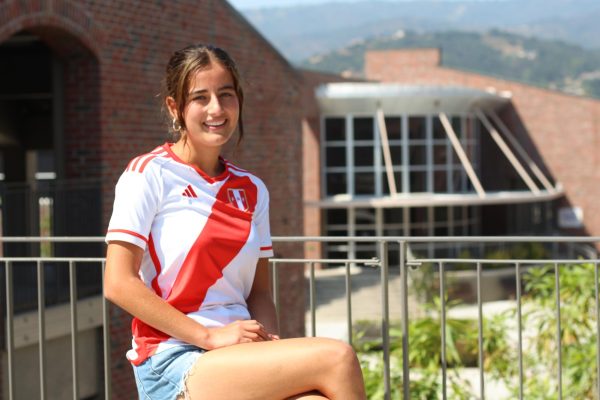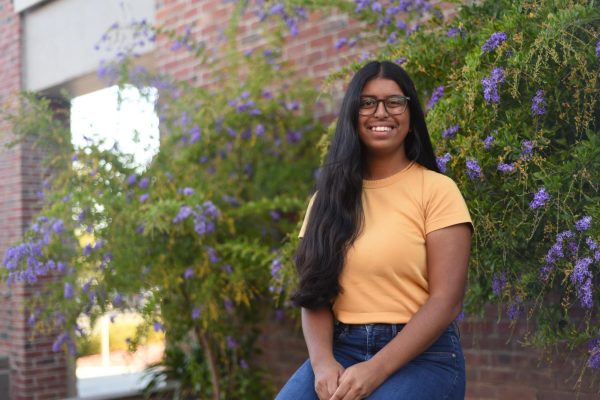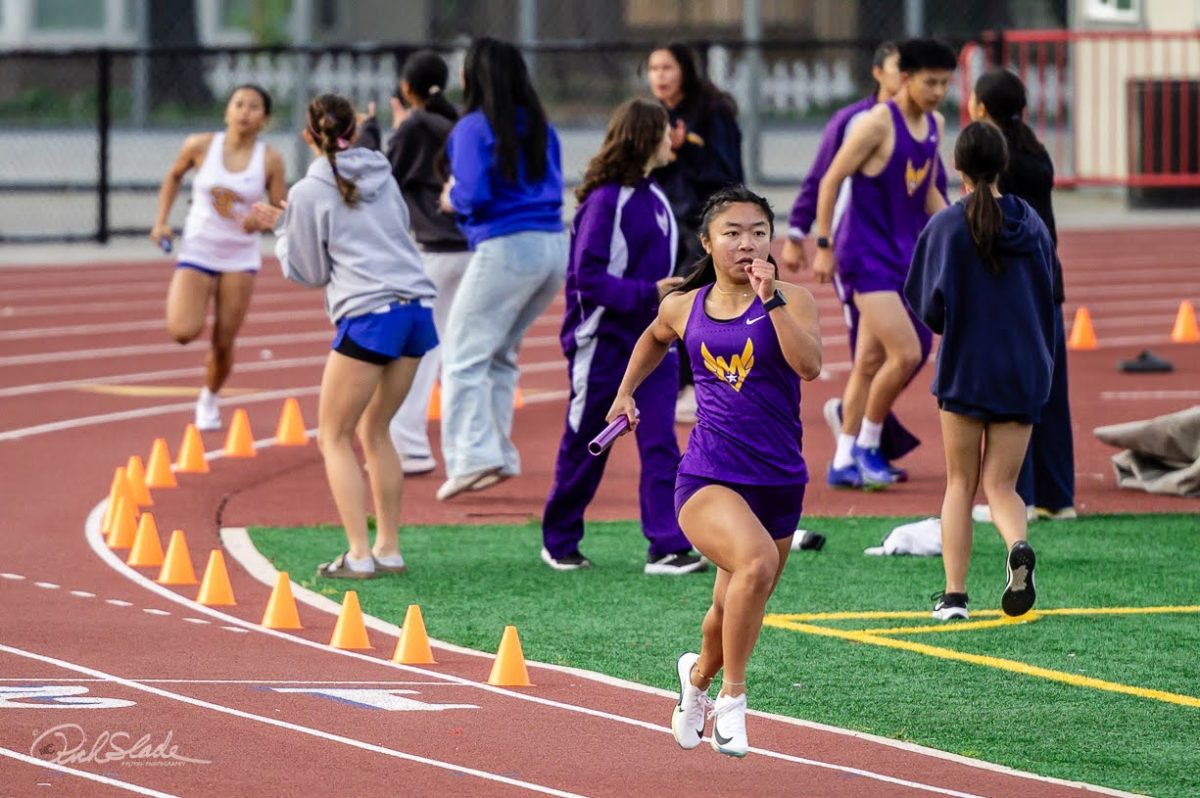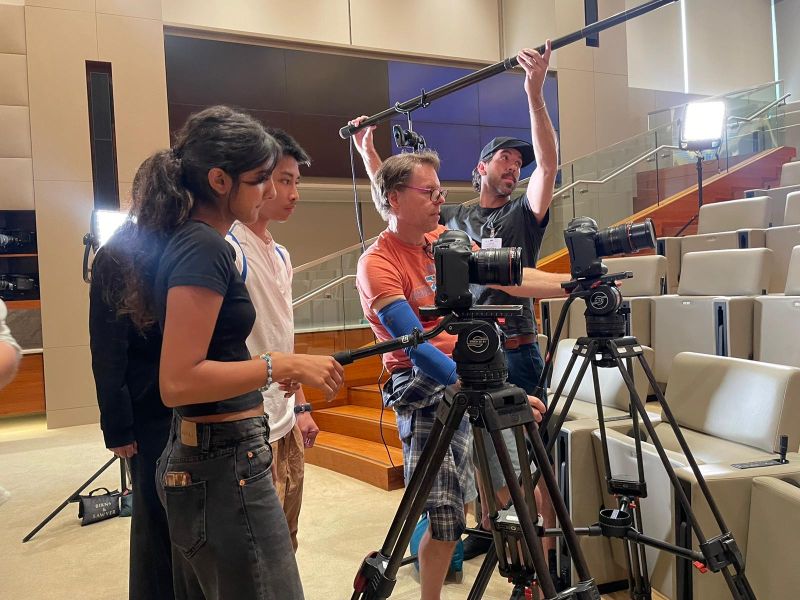Growing up, Ethnic Studies teacher Usiel Meraz-Cerna’s favorite parts of his History and Literature classes were when he felt ethnically represented. He cherished these instances, though occurrences of Mexican American representation and education were sparse. Later in college, Meraz-Cerna took it upon himself to learn more about Mexican American history and literature due to its connection to his cultural identity. He also studied African American literature because of the diversity of Oakland, the city he grew up in.
“Any group of friends in my high school was a pretty mixed group, in terms of ethnicity and language,” Meraz-Cerna said. “And so that’s something that I also felt kind of solidarity with, and that I connected with. So in college, it was something I was driven to study.”
As a result, when Meraz-Cerna was interviewed for his current position, a U.S. History teacher, before the 2022-2023 school year and was asked about his willingness to teach an Ethnic Studies class, it was a perfect fit. Newly required by the state of California, the one semester class aims to teach freshmen the history of minority groups in America. Other than that, it was up to the district teachers to decide how to approach it for the pilot program, and Meraz-Cerna jumped at the chance to help develop the curriculum for this school year.
Similarly, when FUHSD emailed district science teachers with an opportunity to be part of planning the new Health course, biology teacher Pooya Hajjarian signed up right away. He saw an opportunity to incorporate topics he wanted students to know about but that don’t fit into state biology standards. One of his main goals was to have a mental health unit, as he believes skills like stress management are crucial for students.
“To me, these are life skills that I think every student needs to know,” Hajjarian said. “It deserves much more time than just a little sprinkle here and there. And there’s so many things I want to bring to the table that are important to me, not just as an educator, but to the 14 or 15-year-old version of me that wishes he had these things.”
Hajjarian also wants the Health class to focus on students’ improvement rather than solely on lectures and tests. Students often work on data-driven projects that connect the class directly to them by analyzing how their health habits affect them and how they could be improved. In one project, students collected three weeks of data on how much they slept, and then analyzed how the amount of sleep they got impacted their academics and mental health.
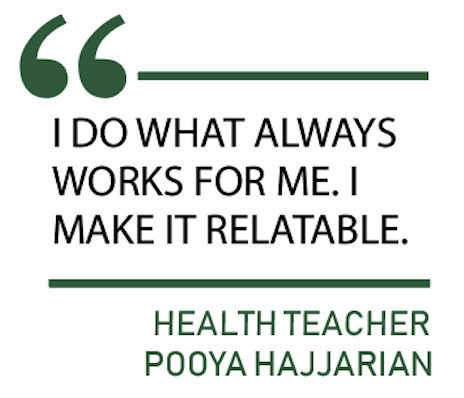 “I do what always works for me — I make it relatable,” Hajjarian said. “I learn really well if I know how this relates to me. If it doesn’t relate to me, it’s hard to feel engaged. So I work on their prior knowledge, and then I tie everything we do to our students.”
“I do what always works for me — I make it relatable,” Hajjarian said. “I learn really well if I know how this relates to me. If it doesn’t relate to me, it’s hard to feel engaged. So I work on their prior knowledge, and then I tie everything we do to our students.”
Relating to students doesn’t just involve talking about personal topics — it also involves listening. According to freshman Siya Joshi, Hajjarian creates an atmosphere in which students are willing to share their own experiences, which helps them reflect more deeply.
“Part of what made the class so enjoyable was, Mr. Hajjarian. He made students really comfortable in the classroom,” Joshi said. “There was never any need to have your guard up. The class really focuses on personal things. It makes it centered around you.”
Meraz-Cerna uses a similar strategy in the Ethnic Studies class, encouraging students to bring in their personal stories. This then becomes a springboard for students to independently explore parts of their cultures.
“It’s an opportunity to reflect on your identity, to connect with your community and to think about your place in American society,” Meraz-Cerna said. “It’s also in a way to build solidarity with other groups of people around your community — in terms of gender, race and ethnicity and in terms of all sorts of ways that people identify themselves.”
Meraz-Cerna believes that the goal of Ethnic Studies is to understand how communities form, which is a different focus from History classes. Additionally, he says the class is integral to freshmen because it introduces tools they can use throughout their high school career.
“If they can understand how a community is formed, how different ethnic communities have formed in the past, and why they call themselves a community and then apply that to their own lives, then that’s the success of the class,” Meraz-Cerna said. “I hope that moving forward, they’re able to take that experience of Ethnic Studies to ask better questions about how all of this stuff that they’re learning in their other classes connect.”
Meraz-Cerna thinks the personalized structure of Ethnic Studies has been successful because the class doesn’t have to cover content like a History class. While History teachers are often under pressure to boil down the content to and remove “side stories,” Ethnic Studies can put diverse voices at the center of the conversation.
Coming from middle school, Joshi realized the history classes she had previously taken often left out large parts of the story. This year in Ethnic Studies, the diverse narratives in the curriculum grabbed her attention.
“A lot of the classes I’ve taken in the past were not the full story,” Joshi said. “It was mostly the common narrative. The Ethnic Studies class definitely made me see the views of other people.”
Senior Diana Arellano Mena agrees that Ethnic Studies offers a unique opportunity to explore topics often overlooked in other classes. She believes that this and the project-based curriculum make the class less stressful and more interesting.
“It’s nice that you get to explore your background, not feel ashamed of it,” Arellano Mena said. “Everyone will be getting a safe space to talk about certain things that you don’t usually talk about in other classes. You’ll learn things that aren’t usually in the textbooks.”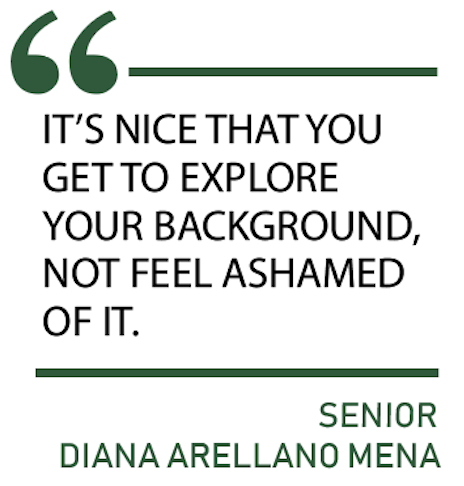
Although Arellano Mena didn’t originally intend to take Health & Ethnic Studies, she found it more fun and insightful than she expected. Similarly, Joshi found it to be much more impactful in her life than she thought it would.
“I was planning to take PE senior year and avoid it the other year because I don’t really like PE,” Joshi said. “But knowing how much it can help made me rethink my decision.”
Now, Joshi plans on taking PE next year and starting a sport outside of school to maintain a good level of physical activity throughout high school. Ultimately, this is exactly the goal that Hajjarian and Meraz-Cerna expressed for the course — giving students a new lens through which to view the world, even though they realize it’s not what students expect from the class.
“It’s going to change your life in a way where you can be a healthier, happier person in all the things that you do, in all your other classes, at home, and in your future,” Hajjarian said. “It’s a game changer.”





